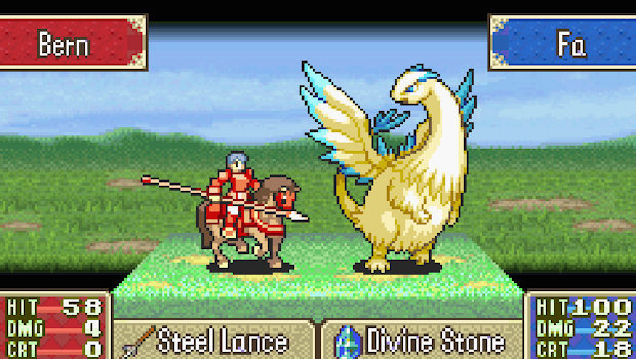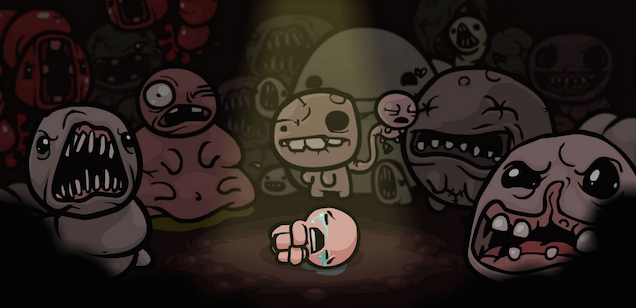Sometimes, the most tragic stories are lurking just beneath the surface. This week in Worth Reading, a dive into what’s really happening in The Binding of Isaac, how Fire Emblem lets players tune the difficulty to their choosing, and much more. Let’s start the weekend!
Hey, You Should Read These

- “Beards optional: Embedded difficulty decisions in Fire Emblem” by Anna Anthropy
Games still haven’t figured out how to convey difficulty levels to players yet. Think about Halo. It’s a game recommending most people choose a level of challenge higher than “normal,” long thought of as the default. Once you’ve picked a difficulty path, that’s it. Don’t like it? Start over. Anna Anthropy points out how Fire Emblem plays with difficult, allowing players to choose from a set of standardized difficulty settings — easy, medium, hard — as differentiated by beard length, while also providing in-game options — overpowered characters — to dynamically alter it. When I played Diablo III last year, I loved how I could alter the difficult in real-time. If I was breezing through, I’d amp up the challenge and get better loot. Hit a roadblock? Turn it down.
“Marcus — or the gun that fires super powerful shots, but has a really long cool down before you can use it again, so it demands a lot of accuracy to use — is a difficulty decision that you have context for, because you can constantly test the boundaries of his strength in actual play. You can watch him demolish a dude and then go, “Maybe I should let my Archer level up a bit.” You can watch one of your characters lose half his hit points to a single enemy and decide, “Time to call in Marcus.”
These embedded difficulty decisions give the player the chance to continuously rescope her own desired difficulty level, allow her to find and fine tune the boundaries of her own play experience. Fire Emblem is real good at this sort of thing: Sacred Stones will sometimes periodically give you level one characters you can arduously level up into powerful fighters or over-classed powerful fighters that you can choose to put on the front lines, or not, or only when you’re desperate.”

Part of what’s so unique to games is how you can enjoy one aspect of it while ignoring — or not picking up on — others. The Binding of Isaac is a well-made game, a tough-as-nails roguelike with hundreds of hours to offer. You can also play it without picking up on the methodical and layered storytelling happening, but Patrick Lee excellently breaks down what’s happening to Isaac (and the player) as they continue to descend into the basement. It’s a story of hope, abuse, and redemption told through the struggles of a young boy. And hey, it’s also really fun to play.
“Every power-up that Isaac collects during his trek has both a utilitarian and superficial effect. The Chemical Peel increases the power of Isaac’s every other shot, but it also leaves the left half of his face hideously burned. Stigmata boosts Isaac’s health and damage output but causes him to bleed from the eyes. These mutations accumulate, so collecting both the Chemical Peel and the Stigmata will leave Isaac a burn victim crying blood. At the start of every new game, Isaac is as naked and pristine as a newborn baby, but by the time he is powerful enough to escape the basement, he has become warped by several floors’ worth of compounded mutilations.
Isaac recognises that human bodies are inherently sinful, and this self-flagellation is what gives him the power to fight back against the basement’s body horrors. After all, if God Himself decrees that only death can save him from sin, surely self-harm of this sort must lend him a fraction of the power he needs to fight back against bodily corruption. So if Isaac’s foot causes him to stumble, he cuts it off; if his eye causes him to stumble, he tears it out (literally, as a power-up called The Peeper causes Isaac’s eye to pop out of its socket and go bouncing around the room).”
If You Click It, It Will Play
These Crowdfunding Projects Look Pretty Cool
- Dallas More wants to make new Commodore 64 computer housing from the old molds.
- Halycon 6 is one of the first games coming out of the Square Enix Collective initiative.
Tweets That Make You Go “Hmmmmmm”
Glad people are happy about Blizzard’s latest character design for Overwatch, but did no one play Binary Domain?http://t.co/H1qSIunRsF
— Not my tempo (@schillingc) March 6, 2015
https://twitter.com/NYUGameCenter
If Overwatch ripping off TF2 so precisely is a response to dota2 it may qualify as the highest budget act of passive-aggression in history
— Aevee Bee (@MammonMachine) March 11, 2015
Oh, And This Other Stuff
- Matt Gerardi argued Wind Walker and Metal Gear Solid 2 are the same game. What?!
- Maddy Myers pushed back against the notion of the “cool gamer girlfriend” stereotype.
- Carolyn Petit explored the sadness of saving (and not saving) people in Majora’s Mask.
- Danielle Riendeau reported on this GDC’s inspiring #1reasontobe panel.
- Leigh Alexander and Laura Hudson launched an exciting new game site, Offworld.
- Shotski reminisced about how much he used to love being ignorant about games.
- Tim Rohan discovered an MLB player using games to relax during spring training.
- Katherine Cross wrote about the toxicity one must deal with as an online activist.
- Steve Lubitz shared how games have taught his children decision making skills.
- Gregory Avery-Weir used many words to break down the first cabinet in Gone Home.
- Steve Hogarty had lots of sex with virtual men in games and wants to tell you about it.
See you next week!

Comments